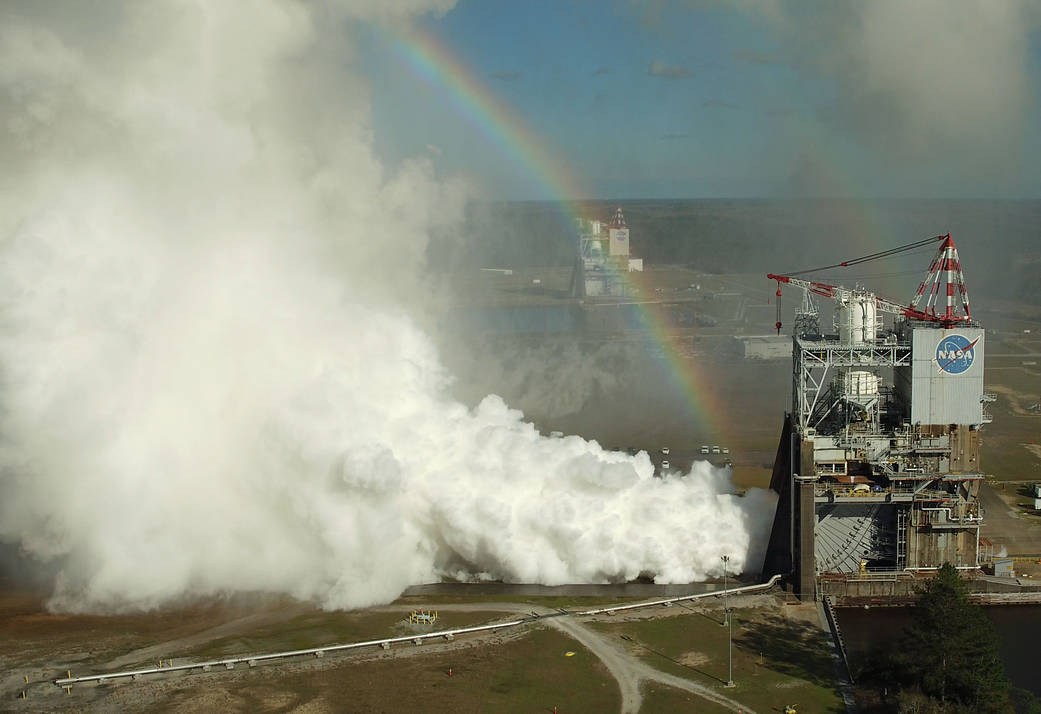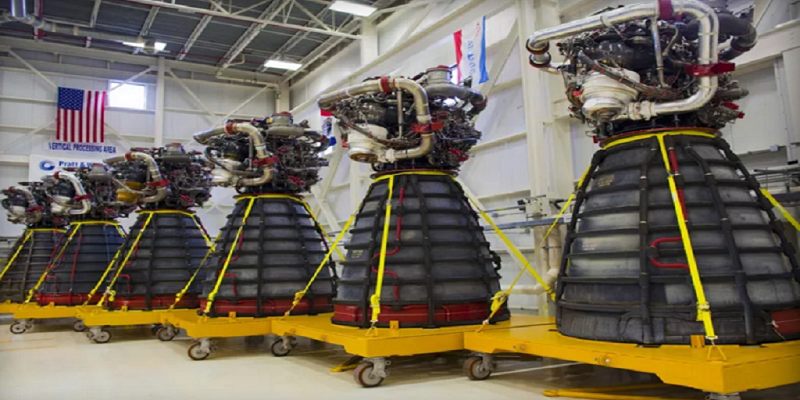Aerojet Rocketdyne Marks Milestone with Completion of RS-25 Engine Certification Tests
The recent successful completion of a 12-test certification campaign marks a significant milestone in Aerojet Rocketdyne (NYSE: AJRD) ‘s RS-25 engine production restart program. In partnership with NASA, this rigorous series of tests was undertaken to certify new RS-25 production engines destined to power NASA’s Space Launch System (SLS) exploration rocket for future Artemis missions, starting with Artemis V.
These engines are the advanced successors of the original RS-25 engines that propelled the Space Shuttle until the end of the program in 2011. Having undergone a transformative redesign to harness advances such as 3D printing, they are expected to perform with the same reliability and robustness as their predecessors but at lower costs and improved performance. The effective utilization of 3D printing technology in producing these engines embodies Aerojet Rocketdyne’s commitment to embracing modern manufacturing techniques.
“The test series went very smoothly, raising our level of confidence that the new hardware designs and manufacturing processes will yield highly producible, reliable engines,” said Eileen P. Drake, Aerojet Rocketdyne CEO and president.
Each SLS core stage is powered by four of these potent engines, capable of generating over 500,000 pounds of thrust each. Like Artemis I, the upcoming three SLS flights will leverage heritage Space Shuttle Main Engines, upgraded with modern flight controllers. Subsequent missions, however, will incorporate the newly built RS-25 engines. The RS-25 represents the only high-performance, liquid hydrogen, staged combustion cycle engine in operation worldwide today.
The certification test series, conducted at NASA’s Stennis Space Center on the historic Fred Haise Test Stand, ran from February 8 to June 22, 2023. It included firings ranging from 500 seconds, which matches the nominal SLS flight profile, to an extended 720 seconds. It tested the engine across a full range of power level settings required for flight — from 80% to 111% rated power — with even some time at 113% rated power, demonstrating what Aerojet dubbed “a valuable operational safety margin.”
The tests also explored the engine’s redesigned nozzle, along with its advanced gimballing capability. Gimballing refers to the swiveling or pivoting ability of a rocket engine, a critical feature for controlling the direction of a spacecraft. In this certification series, the engine demonstrated its ability to adjust thrust direction between 1 to 6 degrees off-center. This precise maneuverability allows for finely tuned control over the spacecraft’s trajectory and orientation, which is essential during the demanding dynamics of a launch and when adjusting the flight path during a mission.
In addition, all the tests performed expanded the RS-25 performance database, a critical reference for certain flight scenarios. The certification campaign also highlighted the new optimized flexible fuel and oxidizer feed lines, resulting in more cost-effective hardware components.
NASA and Aerojet Rocketdyne plan to begin a similar 12-test series on a different engine later this summer to complete the certification process. The newly manufactured engines are scheduled to start delivering to NASA in 2024 and will debut on the Artemis V mission.

Aerojet Rocketdyne completes the initial RS-25 certification campaign of 12 hot-fire tests at Nasa Stennis. Image courtesy of Aerojet Rocketdyne via Twitter.
This series of tests follows years of productive collaboration between NASA and Aerojet Rocketdyne, based in Sacramento, California. The company is contracted to produce 24 RS-25 rocket engines, supporting as many as six SLS flights, for a total contract value nearing $3.5 billion. Initially set for six new RS-25 engines, the deal was expanded in 2020 with a $1.79 billion contract modification for 18 additional RS-25 engines to bolster future deep space exploration missions.
These RS-25 engines, employing a blend of liquid oxygen (LOX) and liquid hydrogen (LH2) as propellants, will power the core stage of NASA’s mighty Space Launch System rocket during the historic Artemis III mission. This mission will mark a significant milestone as it seeks to return humans to the Moon’s surface for the first time in over half a century.
At present, 16 RS-25 engines remain from NASA’s Space Shuttle Program. These engines have been upgraded and tested by Aerojet Rocketdyne and stand ready to support the first four SLS missions. As more SLS missions are anticipated to launch well into the end of the decade, Aerojet Rocketdyne has been commissioned to build additional engines. Six new expendable RS-25 engines have been assembled using advanced manufacturing techniques, including 3D printing. These methods have reduced the cost and the time needed to manufacture each engine. This move towards more efficient production underlines Aerojet Rocketdyne’s commitment to meeting the demands of future space exploration.
Aerojet Rocketdyne has recently seen some big changes. On March 16, the company’s shareholders said “yes” to all the steps needed for L3Harris Technologies (NYSE: LHX) to buy the company. Both firms announced in December the signing of a definitive agreement for L3Harris to acquire Aerojet Rocketdyne for $58 per share in an all-cash transaction valued at $4.7 billion, including net debt.
But not everyone is happy about this. Lockheed Martin (BCBA: LMT), another big company in aerospace and defense, is worried about L3Harris owning Aerojet Rocketdyne. Interestingly, Lockheed Martin had tried to buy Aerojet Rocketdyne for $4.4 billion, but they gave up in February 2022. The Federal Trade Commission (FTC) had attempted to stop the deal, saying that Lockheed Martin could make it hard for other companies to use Aerojet products.
“This is an exciting new chapter for Aerojet Rocketdyne and our over 5,200 dedicated team members, providing them with additional opportunities, and we look forward to working closely with L3Harris to complete this transaction,” concluded Drake a few months ago.
Subscribe to Our Email Newsletter
Stay up-to-date on all the latest news from the 3D printing industry and receive information and offers from third party vendors.
Print Services
You May Also Like
RAPID 2025: Stratasys & trinckle Announce Strategic Software Partnership
News continues to flood in from last week’s RAPID+TCT 2025, including a new partnership between AM market leader Stratasys and Berlin-based software company trinckle. By automating important steps in fixture...
RAPID TCT 2025: Spring in the Paris of the Midwest
I’m going to go out on a limb here and say that whomever coined the phrase Detroit: Paris of the Midwest, had not spent a lot of time in Paris...
3D Printing Financials: 3D Systems Looks to Bounce Back in 2025
After a challenging year for the industry, 3D Systems (NYSE: DDD) ended 2024 with results pointing to a reset, laying the groundwork for future profitability. The company didn’t post strong...
Printing Money Episode 27: Q4 2024 Public 3D Printing Earnings Review with Troy Jensen, Cantor Fitzgerald
Q2 2025 has already begun, but public markets reporting has only just finished with Q4 2024. To tie a bow on Q4 2024, we are thankful to have Troy Jensen...


























